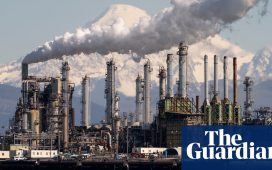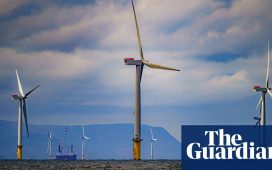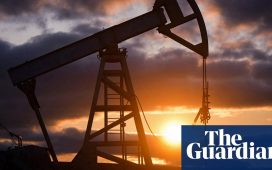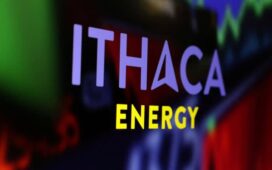Unlock the Editor’s Digest for free
Roula Khalaf, Editor of the FT, selects her favourite stories in this weekly newsletter.
Britain’s Labour party has tried to quash growing doubts that it can hit its target to decarbonise the electricity system by 2030 should it form the next government, despite further delays to the flagship Hinkley Point C nuclear power station.
The UK’s main opposition party — which has a strong lead in the polls ahead of this year’s general election — wants all electricity generation to come from low-carbon sources, such as wind, solar and nuclear, within six years.
The so-called “clean power” target, one of Labour leader Sir Keir Starmer’s five main “missions”, is part of a wider, debt-financed “green prosperity plan” to invest billions of pounds in the shift to net zero by 2050.
But analysts have warned the delays to the new nuclear power plant being built by French state-owned EDF at Hinkley Point in Somerset would make the already challenging 2030 target even harder to hit.
The 3.2GW plant, which is meant to be the first of a new series of nuclear power stations to replace Britain’s ageing fleet, was originally due to start generating electricity next year. But in the latest of a series of delays, EDF said this week it would now push back the opening of the first of the plant’s two reactors to between 2029 and 2031.
A Labour party official said its target was still achievable. “The party’s plan for clean power by 2030 is not dependent on the delivery of Hinkley C.” Instead he said the target included a range of scenarios, which also included extending the life of some existing nuclear plants or accelerating Britain’s interconnector capacity.
EDF, which operates the UK’s ageing fleet of five nuclear power plants, is looking to extend the life of the four that were all due to close by March 2028. Any such step would require regulatory approval and was unlikely to keep any of them open beyond the early 2030s.
But Josh Buckland, partner at the consultancy Flint Global, said it was likely that gas-fired power plants would have to plug the gap in generating capacity. Labour’s target was “incredibly challenging” even before the latest delay to Hinkley Point he said.
“This makes it even more challenging. This sort of announcement shows the scale of the challenge [a Labour government is] going to have in achieving that target,” he added.
Tom Edwards, senior modeller at Cornwall Insight, agreed it was likely gas-fired power plants would need to step in to help make up for declining nuclear capacity. “There are periods where offshore wind will pick up the slack, but it is intermittent,” he said.
Nuclear power is seen as a crucial part of the low-carbon energy mix because it provides “baseload” continuous energy in contrast to solar and wind generation, which is weather dependent.
Some analysts doubt the Conservative government’s low-carbon generating targets — 95 per cent by 2030 and 100 per cent by 2035 — are realistic given the delays to the nuclear build programme.
Ed Miliband, Labour’s shadow energy secretary, said successive Tory governments had dragged their feet. “The last Labour government identified a series of sites for new nuclear and after 14 years of this government we still stand years away from any new stations being operational.”
The government has a target of building 24GW of new nuclear power by 2050, compared with just 5.9GW at present.










